Soccer 101: All Soccer Positions Explained By Name & Number
Soccer positions are grouped into four main categories: Goalkeepers, Defenders, Midfielders and Forwards. You then have positions within these categories, such as wingbacks, center backs, central midfielders, wingers, and strikers. Discover everything you need to know below.
Skip to:
- What Are The Positions In Soccer?
- Player Formations
- Soccer Position Numbers
- Soccer Position Abbreviations
What Are The 11 Positions In Soccer?
Players are grouped into four categories in a soccer roster (or squad). They are:
- Goalkeepers
- Defenders
- Midfielders
- Forwards
Within these categories, there are different specialist positions with a variety of roles, responsibilities, and names. While soccer positions are constantly evolving, and may vary from team to team, they are traditionally grouped as:
- Goalkeepers
- Full-backs or wingbacks (defenders)
- Center backs (defenders)
- Central midfielders (midfielders)
- Wingers or wide forwards (midfielders/forwards)
- Strikers (forwards)
We will look at each of these positions and their different variations below.
Goalkeeper
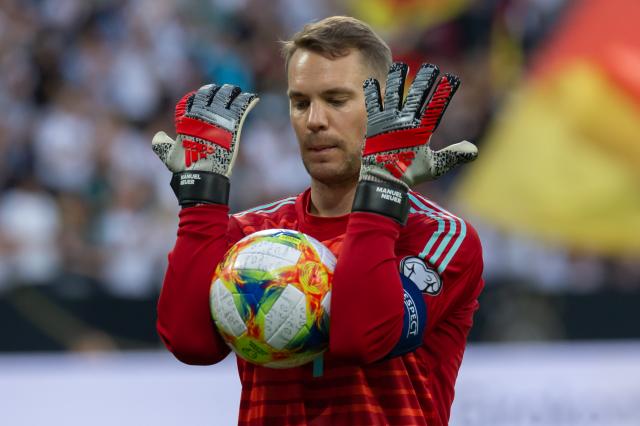
What they do:
Goalkeepers are primarily responsible for preventing the opposition from scoring goals. They do this by stopping or ‘saving’ shots from opposition players, reading the game and clearing any balls that are played in behind their defenders, or catching or punching crosses.
If a keeper can stop the opposition from scoring for the whole game, this is known as a ‘clean sheet’, and in most major tournaments and leagues, there are awards for goalkeepers that achieve the most. In the Premier League, it’s known as the ‘Golden Glove’.
As well as their goal-stopping capabilities, goalies are also increasingly required to have high-level passing skills. Most present-day coaches try to play possession-based football, where the whole team passes around the opposition from one end of the pitch to another, and this all starts with the goalkeeper.
Key Skills:
Shot stopping, catching, punching, organization, communication, agility, reflexes, anticipation, passing and kicking.
Famous players in this position:
Ederson, Allison, Thibaut Courtois, Manuel Neuer, Oliver Kahn, Iker Casillas, Peter Schmeichel, Gianluigi Buffon, Gordon Banks, and Lev Yashin.
Full-back And Wingback
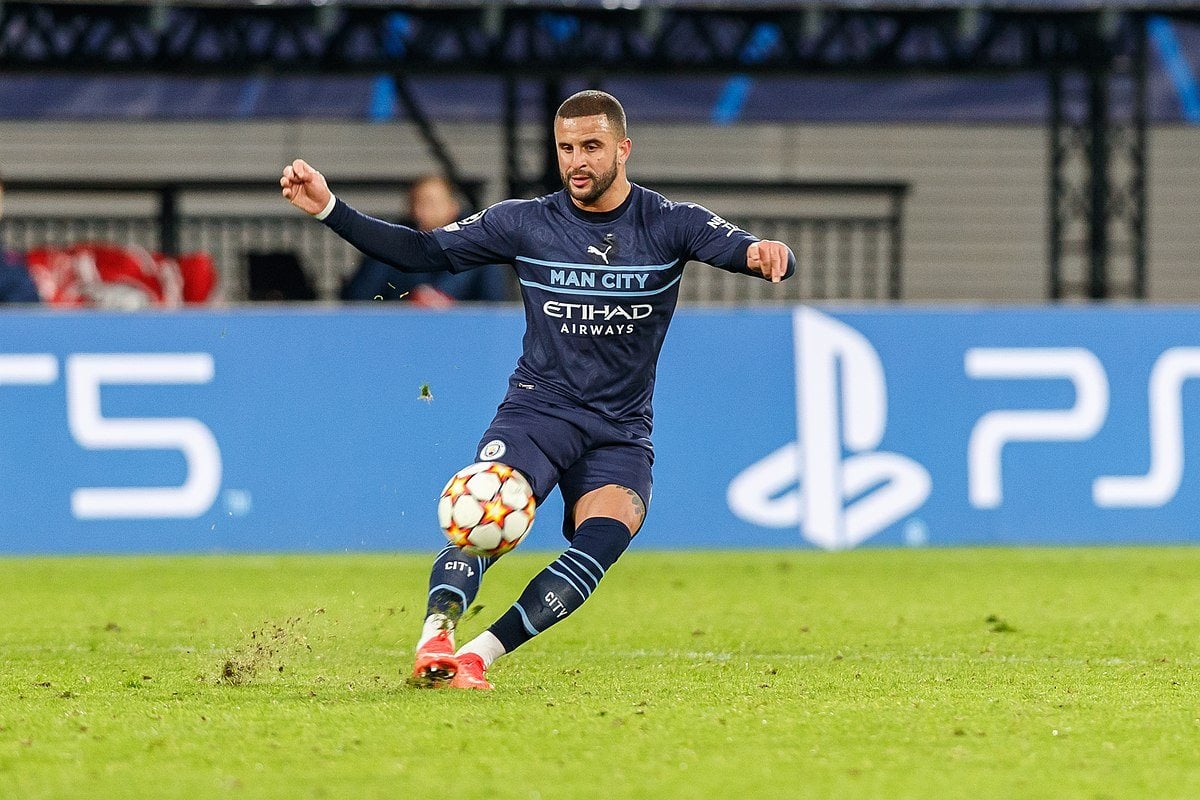
What they do:
Full-backs play on either side of a defense. They work together with other defenders to stop opposition attacking players from creating chances and scoring goals.
Known as either a right-back or left-back, they often face one-on-one situations against opposition wingers or forwards, but must offer an outlet when their team has the ball, and provide offensive support for their forwards.
This traditionally unglamorous position has developed a lot over the past few decades, and modern full-backs are now often viewed as a key creative component of their team. Former full-backs like Dani Alves, Phillip Lahm, and Roberto Carlos helped revolutionize the position and showcased how effective full-backs could be in maintaining possession, building attacks, and carving opportunities out for offensive players.
Wingbacks do a similar job to full-backs but have more of an emphasis on an attacking play, supporting their forwards and attacking players to try and create chances for their team. Historically, wingbacks played a lot further up the field than full-backs, but many of the best current full-backs in the world, like Trent Alexander Arnold and Kyle Walker, are often expected to do both jobs and cover the entire flank, or even move into midfield spaces.
Key Skills:
Tackling, positioning, tactical awareness, interceptions, passing, crossing, speed, stamina, dribbling, communication and versatility.
Famous players in this position:
Trent Alexander Arnold, Kyler Walker, Achraf Hakimi, Dani Carvajal, Dani Alves, Phillip Lahm, Roberto Carlos, Javier Zanetti, Ashley Cole, Cafu, Nilton Santos.
Center-back
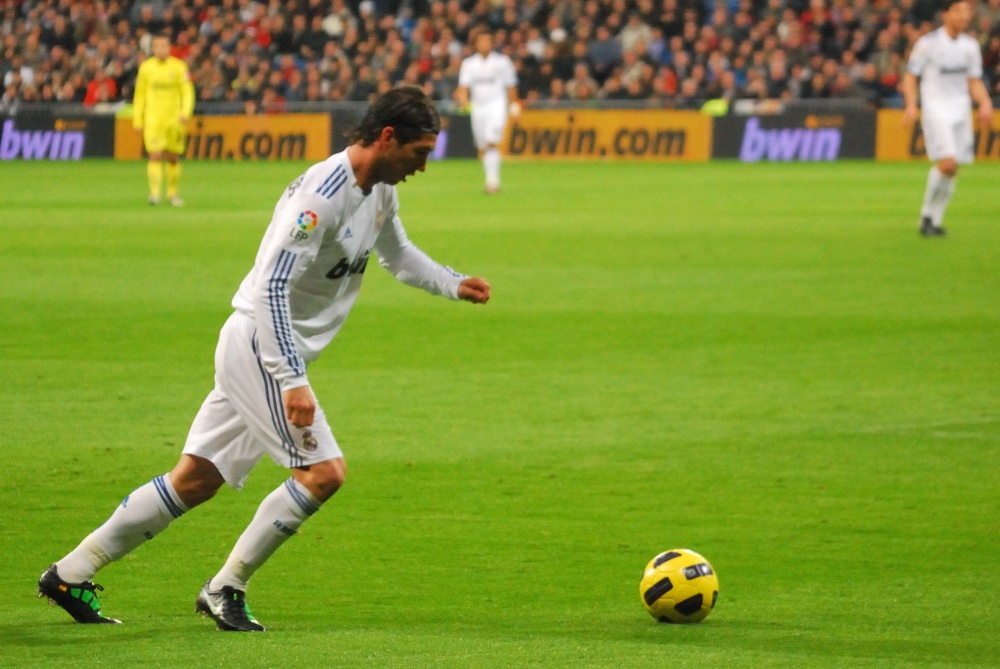
What they do:
Center-backs, also known as central defenders or center-halves, play at the heart of a defense, and their primary objective is to stop the opposition from scoring and creating goal threats.
Usually playing as a pair or a three, center-backs help to organize their team’s defensive structure, ‘mark’ opposition attacking players, build their own team’s attacks, and win both offensive and defensive aerial duels. Often center-halves are the biggest, strongest players on the pitch, and use this physicality to disrupt and dominate the opposition in both boxes.
Center-backs can have different roles within their team, depending on the team’s tactical requirements and the player’s skills. For example, John Stones (Manchester City) is known as a technical ‘ball-playing’ defender who is comfortable on the ball and starts attacks with clever passes.
On the other hand, Giorgio Chiellini (Juventus) was known for aggression, tenacity, and ‘no-nonsense’ defending which were skills that were more traditionally associated with center-backs.
Key Skills:
Tackling, positioning, tactical awareness, blocking, interceptions, passing, strength, communication, leadership, heading, jumping, and anticipation.
Famous players in this position:
Virgil van Dijk, Sergio Ramos, Gerard Piqué, Carles Puyol, Vincent Kompany, John Terry, Fabio Cannavaro, Paolo Maldini, Ronald Koeman, Franz Beckenbauer, and Bobby Moore.
Center Midfield
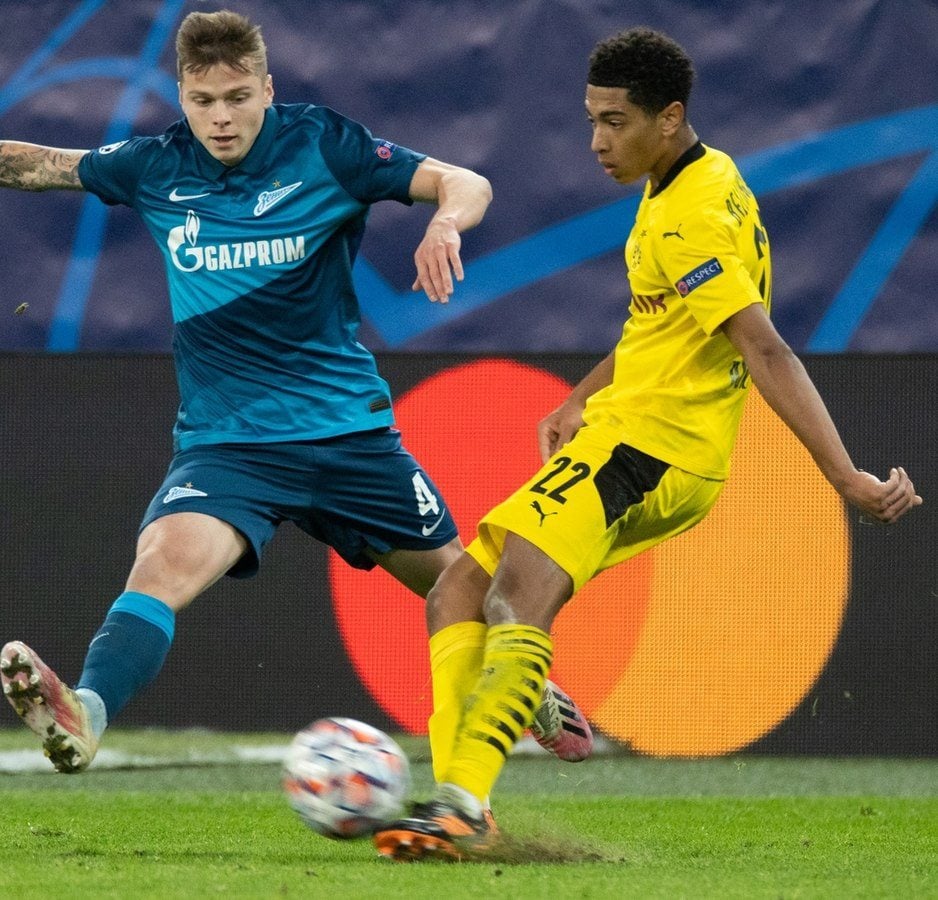
What they do:
Central midfield is one of the most diverse and sophisticated positions in soccer. Center midfielders usually play one, if not a combination of the following roles:
Holding or defensive midfielder
Defensive midfielders protect their center backs and break up opposition attacks with interceptions and tackles. They are also responsible for offering an initial outlet to build attacks and need excellent passing skills.
Box-to-box
Outstanding all-rounders, box-to-box players have to do everything on the pitch, helping their teams both offensively and defensively. Using a combination of physicality, hard work, and technical skill, box-to-box players are equally likely to be seen making a key tackle in their own half as shooting on goal or providing a key pass for a striker.
Number 8
Similar to a box-to-box midfielder, number 8s have outstanding all-round ability but are more focused on controlling the possession and tempo of a game and building their team’s attacks.
Playmaker or attacking midfielder
Also known as attacking midfielders, or “number 10s”, playmakers try to create chances and score goals for themselves or their teammates. They often play between midfield and attacking players. They require outstanding touch, vision, passing, and shooting skills.
Central midfielders need to have diverse skills and may be required to play different roles even in the same game. Real Madrid star, Jude Bellingham previously wore the number 22 which signified the fact he could be a number four (holding midfielder), eight (box-to-box midfielder), and ten (attacking midfielder) at the same time. It highlights the importance of versatility in this position.
Key Skills:
Passing, awareness, vision, dribbling, control, tackling, interceptions, pressing, shooting, stamina, tactical awareness, communication, leadership, versatility, technique and playmaking.
Famous players in this position:
Jude Bellingham, İlkay Gündoğan, Kevin De Bruyne, Pedri, Luka Modrić, Xavi, Andrés Iniesta, Andrea Pirlo, Clarence Seedorf, Paul Scholes, Steven Gerrard, Zinedine Zidane, Bobby Charlton and Lothar Matthaus.
Wingers Or Wide Forwards
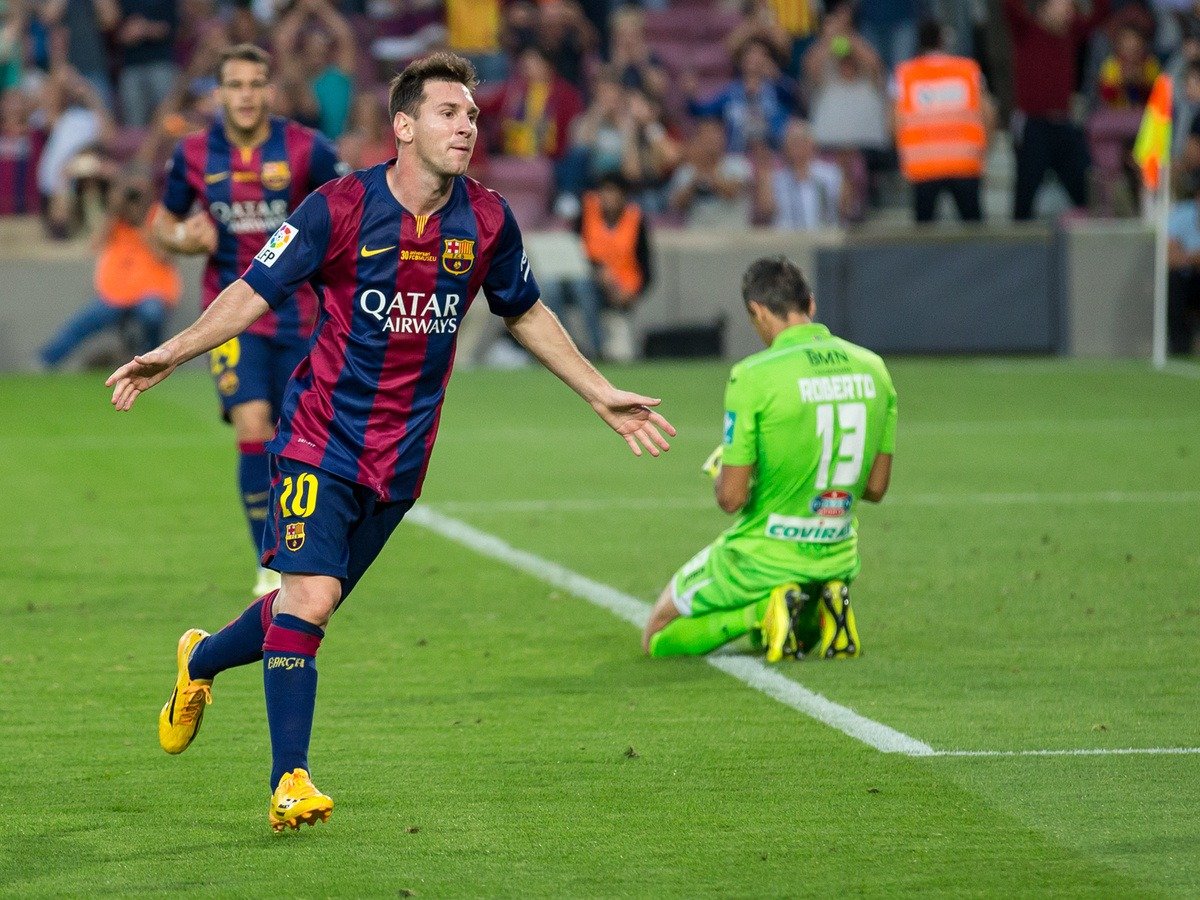
What they do:
Wingers (also known as wide forwards) are attacking players that play on the flanks. They try to create and score goals for their team. Traditionally, wingers operated in the wide positions of a midfield four, however, many modern coaches play with a 4-3-3 formation and use two wide forwards and one central striker.
Wingers are often the quickest and most skillful dribblers in the team and usually have lots of individual battles with the opposition full-back throughout a match.
Wingers either look to run past opposition defenders on the outside, and cross balls into the box for their teammates to attack, or they cut inside and look to shoot or play passes around the opposition in central areas. Both require excellent close control, attacking vision, and pace.
Key Skills:
Speed, acceleration, dribbling, control, passing, crossing, shooting, tactical awareness, technique and playmaking.
Famous players in this position:
Lionel Messi, Vinicius Junior, Mohamed Salah, Gareth Bale, Neymar, Rivaldo, Arjen Robben, Ryan Giggs, Stanley Matthews, George Best, and Garrincha.
Striker Or Center-forward
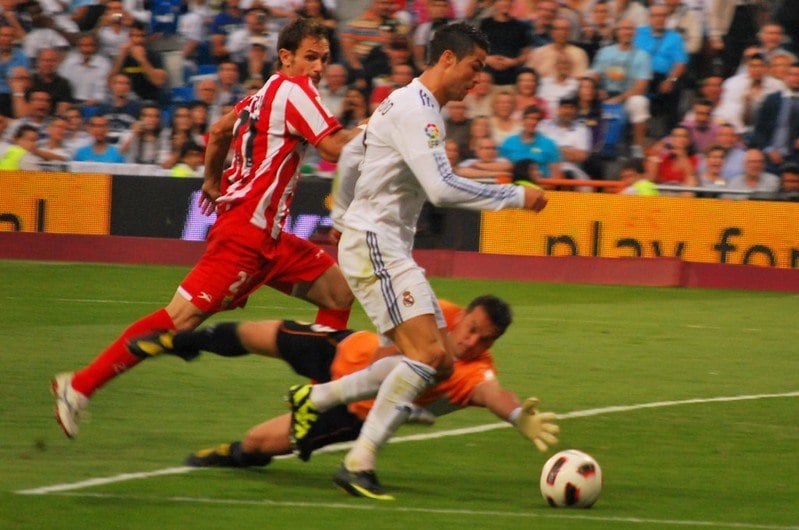
What they do:
Also known as the ‘number nine’ position, the striker soccer position is primarily responsible for scoring goals for their team. Usually, they operate in central areas (which is why they are also known as center-forwards) and act as the goalscoring focal point of the team.
Strikers are matched up against central defenders, so have to have outstanding physical attributes. They either need to be able to hold off defenders and protect the ball so their team can build attacks, or to have the speed to run behind them. The best strikers in football history could often do both.
Prolific strikers can be the difference maker for their team. After all, goals win games. The best strikers can dig their team out of a sticky situation with a majestic piece of play or outstanding finish. This is why the striker position in soccer often costs more money than players in any other position.
Key Skills:
Shooting, technique, control, positioning, tactical awareness, composure, passing, pressing, strength, speed, heading, jumping, and anticipation.
Famous players in this position:
Cristiano Ronaldo, Erling Haaland, Harry Kane, Luis Suárez, Robert Lewandowski, Samuel Eto’o, David Villa, Alan Shearer, Gerd Müller, Pelé, Ronaldo, and Alfredo Di Stéfano.
Soccer Player Formations
It’s also important to understand formations. Formations, tactics, and player responsibilities are constantly developing, and it is the coach’s job to get the most out of their team. There are no restrictions on where players can go on the field, or what they can do (within the rules). That’s up to them and the coach.
Soccer coaches or managers set their teams up in formations that dictate where the player will most often be on the pitch, and what their responsibilities are within the team. The most common formations in the modern era are:
- 4-4-2
- 4-5-1
- 4-3-3
- 4-3-2-1
- 4-1-3-2
- 5-4-1
- 4-1-2-1-2 diamond
- 3-5-2
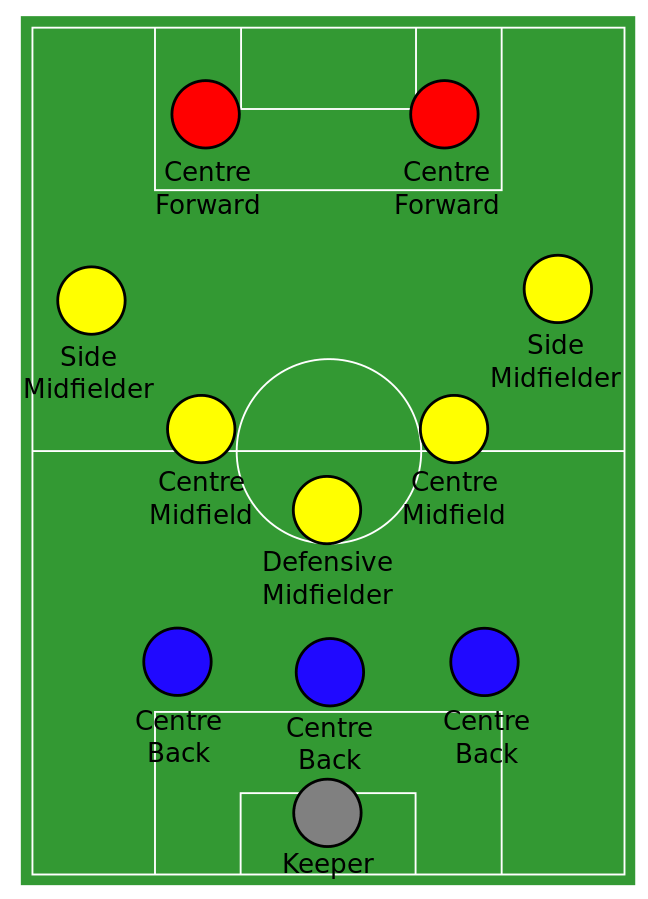
Each formation has its pros and cons, and a coach might want their players to be very rigid and disciplined within it, or give them more freedom and expression on the pitch. It’s the player’s job to understand what the coach wants, and then execute it in the game.
Soccer Position Numbers
All soccer players wear numbers on the back of their jerseys, and they often correspond to the position that the player plays on the pitch. Historically, players wore the correct number for their position, and ‘squad players’ were assigned a number above 11.
Nowadays, though, it’s not unusual to see a modern superstar wearing a non-traditional soccer number. Liverpool’s Trent Alexander Arnold wears the number 66, while Man City’s Phil Foden wears 47. Legendary Brazil striker Ronaldo Nazário also wore number 99 in his time at AC Milan because his favored number 9 was already taken.
But, most commonly, positional numbers in soccer:
- Goalkeeper
- Right-back
- Left-back
- Center-back
- Center-back
- Central defensive/holding midfielder
- Right winger/forward
- Central/box-to-box midfielder
- Striker
- Playmaker/attacking midfielder
- Left winger/forward
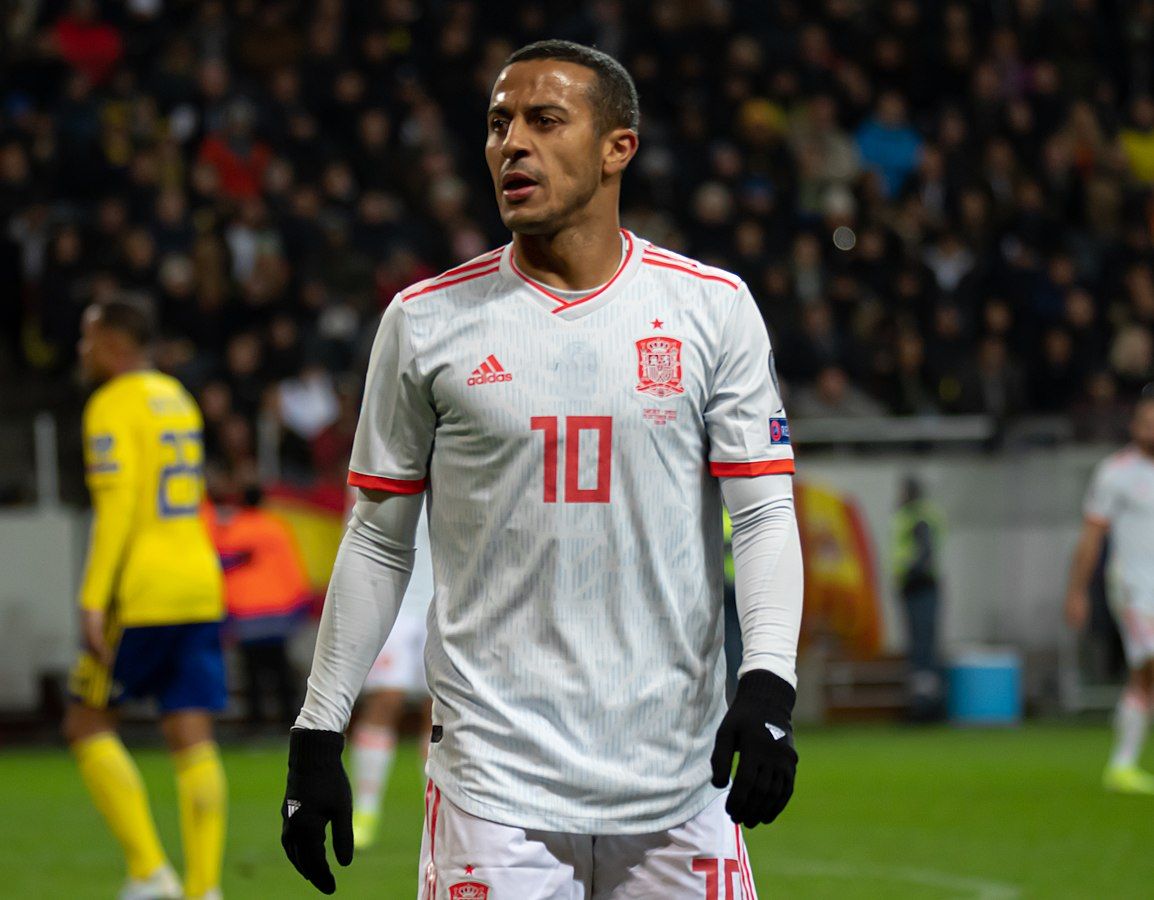
Soccer Position Abbreviations
All soccer field positions can be abbreviated down to two or three letters, instead of using the full name. If you’ve ever built your own soccer team online or played a soccer management simulation game, you’ve probably discovered this before.
The full list of abbreviations are:
- Goalkeeper – GK
- Center-back – CB
- Right full-back – RB
- Left full-back – LB
- Right wing-back – RWB
- Left wing-back – LWB
- Central defensive/holding midfield – CDM
- Center midfield – CM
- Attacking midfielders – AM
- Right winger/forward – RW
- Left winger/forward – LW
- Center forward – CF
- Striker – ST
Soccer Positions FAQ
Soccer positions are their roles can be complicated, especially if you’re not familiar with the game. To make sure you’ve got all the info you need, we’ve answered some of the most commonly asked questions about soccer positions:
Q: What are the 11 positions in soccer?
The 11 positions in soccer are Goalkeeper, right-back, left-back, center-back, central defensive/holding midfielder, right winger/forward, central/box-to-box midfielder, striker, playmaker/attacking midfielder and left winger/forward
Q: What is the hardest position in soccer?
Since its a team game, all positions contribute to the success of the team in soccer. However, the goalkeeper is usually regarded as one of the hardest positions in soccer because of their unique role.
Q: How many players on a soccer team?
While only 11 players can be on the field, most soccer teams have a roster of 18 to 23 players on average. This allows them to cover the five substitutions they are allowed and adapt to any injuries.
Q: How many soccer players are allowed on the field?
Only 11 players are allowed on the field per team. A goal keeper and 10 outfielders. However, teams can find themselves playing with fewer players if any get red-carded and sent off.
Learning The Beautiful Game
In this article, we’ve covered everything you need to know about all positions in soccer and their related soccer numbers. Remember though, soccer number positions are just theoretical. Just because a player usually plays a specific position, or wears a particular number, doesn’t mean they can’t go into a certain area of the pitch, attack and defend, or even play multiple positions in one match.
As the game develops and coaches are looking for more innovative ways to beat opposition teams, traditional positions are becoming a thing of the past.
Players are increasingly required to take on more responsibility on the pitch, so don’t be surprised to see star strikers working as hard defensively as they do in the attacking third, or for a full-back to be their team’s main creative outlet. Positions are just a guide. Coaches, players, and teams are all unique.
For more on soccer, check out our articles on soccer relegation, the best soccer teams of all time, and the richest soccer teams.


